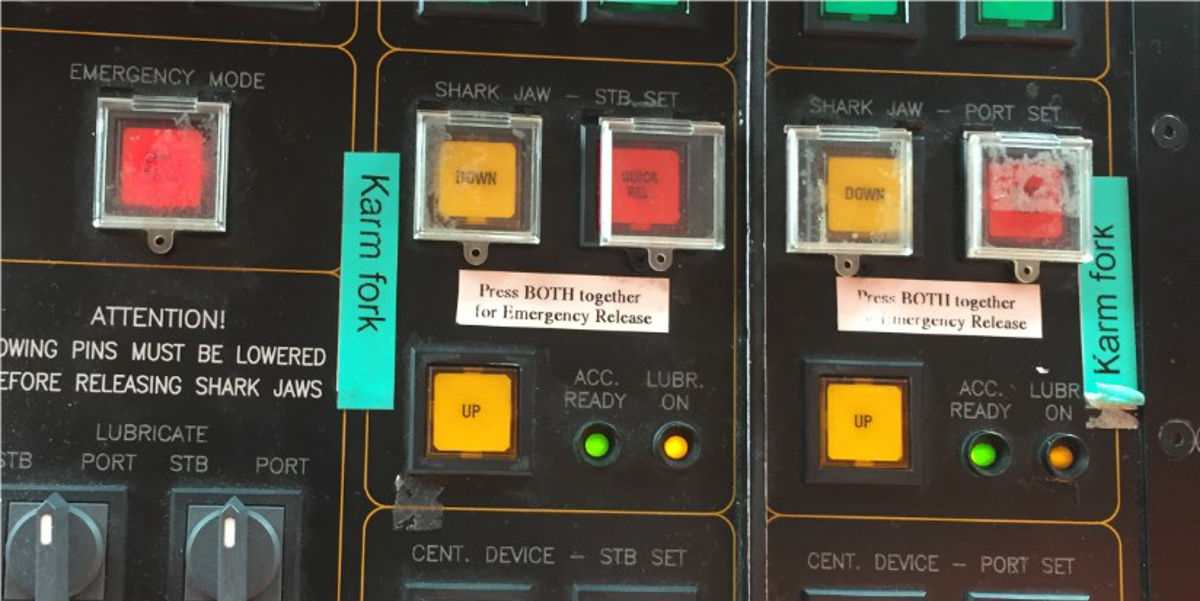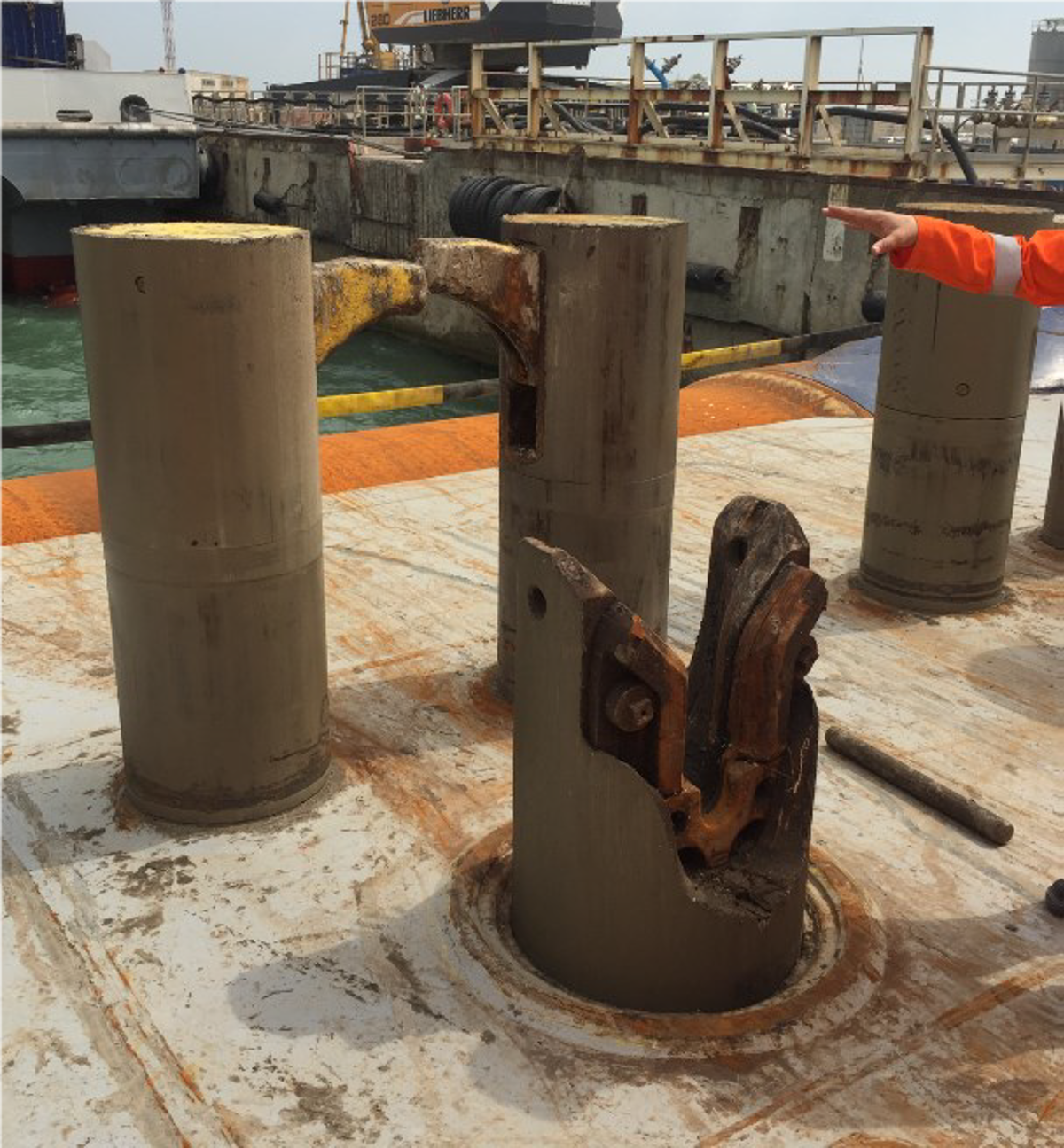Loss of rig anchor wire from vessel Karm Fork
- Safety Flash
- Published on 30 September 2019
- Generated on 23 December 2025
- IMCA SF 23/19
- 2 minute read
Jump to:
There was an unplanned retraction of the Karm Fork on an Anchor Handling Vessel, leading to an anchor tow wire and chain to be dropped.
What happened?
The incident occurred during a rig move.
The Anchor Handling Vessel (AHV) was following the rig with the anchor line secured in the Karm Fork on deck with 300 m of wire and 150 m of chain between the rig and vessel.
During the transit to the new location, the vessel accidentally retracted its Karm fork, allowing the wire and chain between the vessel and rig to slip over the vessel stern roller into the sea.
Water depth at the time was 370 m. No subsea assets were in the vicinity, no personnel were in the line of fire.


What went wrong?
Our member noted that the preliminary investigation revealed that the causes were lack of communication, failure to follow company procedures and failure to follow the Master's instructions:
- The Chief Engineer raised the port side Karm Fork with no command from the Master – the company procedure states “All instructions for operation of the anchor handling plant will be disseminated directly from the Master".
- Ignoring the Master's request and lack of attention - even after the Master's second command to lower the port side Karm Fork, the Chief Engineer delayed the task implementation and then in a rush accidentally pushed the emergency release buttons of the wrong Karm Fork.
What actions were taken? What lessons were learned?
- Revision of operations manual and task risk assessment
- Relocation of CCTV camera to cover deck area
- Reiteration of need for strict compliance to manual requirements and specifically, the need to follow the requirement that such commands or actions should come from the Master only.
Featured Safety Flashes
-
IMCA SF 12/19
28 May 2019
-
-
IMCA SF 02/10
8 April 2010
-
IMCA SF 01/09
16 January 2009
IMCA Safety Flashes summarise key safety matters and incidents, allowing lessons to be more easily learnt for the benefit of the entire offshore industry.
The effectiveness of the IMCA Safety Flash system depends on the industry sharing information and so avoiding repeat incidents. Incidents are classified according to IOGP's Life Saving Rules.
All information is anonymised or sanitised, as appropriate, and warnings for graphic content included where possible.
IMCA makes every effort to ensure both the accuracy and reliability of the information shared, but is not be liable for any guidance and/or recommendation and/or statement herein contained.
The information contained in this document does not fulfil or replace any individual's or Member's legal, regulatory or other duties or obligations in respect of their operations. Individuals and Members remain solely responsible for the safe, lawful and proper conduct of their operations.
Share your safety incidents with IMCA online. Sign-up to receive Safety Flashes straight to your email.